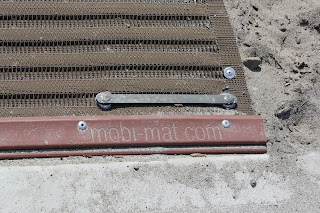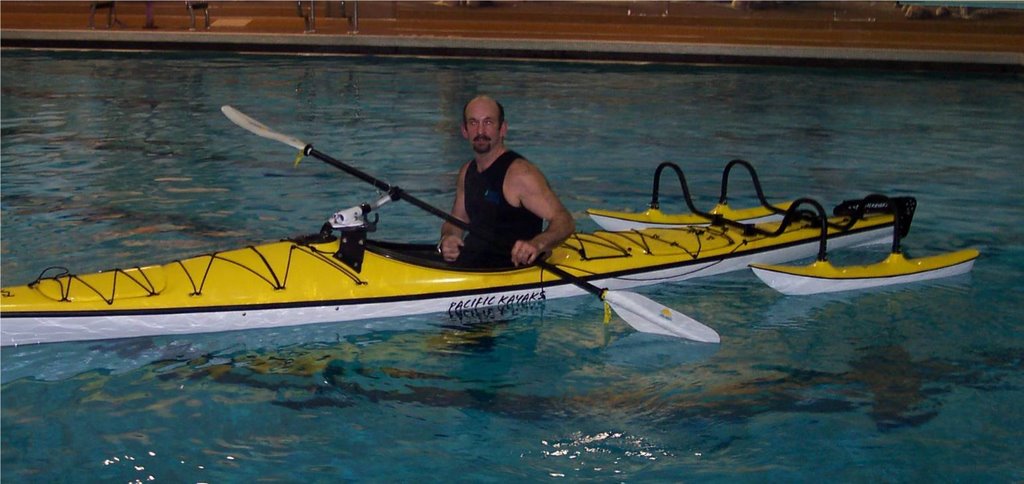Something important about river access became very clear to me this summer while I was paddling the Red Deer River. I'd like to address everyone who owns a business that has water access, whether that be access to a river, lake, or saltwater. Campground owners and park managers, listen up! If there's a sign at the road leading to your operation,
put up a sign at the water access as well. Every person operating a business that promotes itself as having water access should feel that I'm addressing each of them in particular. Picture me frowning seriously as I insist:
Put up a sign at your water access!
 |
| This campground above Content Bridge, and its neighbour below the bridge, have NO SIGNS on the river! |
The sign doesn't have to be huge. Nail it to a tree or a dock, so you don't have to fuss with sinking a post into the ground. The sign doesn't have to be professionally-made... though professionals do a good job of designing a sign that can be read and is appropriately sized and located. It doesn't have to say a lot. The name of your business is a good start. Or it could say "Private Property" if you don't want strange picnickers coming onto your land from the water.
 |
| Two years ago, John took this photo in Saanich Inlet, showing a practical sign. |
This absence of signs doesn't trouble me too much here in Victoria BC on the Inner Harbour (few places to land) or the Upper Harbour (working harbour with a number of signs and few places to land) or the Gorge (mostly private property). It would be nice to see in this general area a few more signs visible from the water, like the ones we've seen at
Gowland/Tod Park and
Discovery Island Marine Park. Parks and campgrounds have no excuses: put up a sign at the water access!
The need for signs became very apparent to me when kayaking down the Red Deer river between the city of Red Deer and Drumheller. By all reports, this is the most-used stretch of river in Alberta. It's very quiet water, well-suited to novice paddlers in kayaks, canoes, and rafts, and in some places inner tubes for floating. On the most popular river in Alberta for novice paddling, during the August long weekend, I passed a dozen campgrounds and parks with official river access that was marked on the Middle Red Deer River map (sold through
MEC) and on websites for the parks and campgrounds. Eleven had no signs at their river access! There was only ONE campground that had ANY sign at all at its river access. I'll tell you which one that was a little later.
In the meantime, I'll address a related rant to the managers of campgrounds and parks. If you have a website for your park or campground, with photos of the location, include a photo of the road access and the water access. This isn't rocket science. If your website has the bandwidth to support showing three photos of the location, it can include a photo of the entrance. It's great to see a photo of the playground or the tall trees or the amazing geology of your location... but if visitors can't tell when they're approaching the access, they'll miss the turn or the landing and go merrily along the road or shore. Sometimes for miles. Sometimes they can't turn around and get there after all. Of course you'll have a sign (after what I said earlier). Give your visitors a chance to recognise your access points when approaching your location by road or by water.
And while you're at it, put a
geocache at your road access and river access, and tag them online so people can find them in their GPS devices. Even geocaching isn't rocket science these days.
I swear, on this trip to the Red Deer river, I'd read the maps and been to Google Maps, and my ground crew and I STILL drove right past the turn for the
Content Bridge Campground. And on the river, at all but one of a dozen campgrounds and parks, I
Stared Right At the river access and wondered out loud if this was where I was supposed to come ashore.
I had to wonder for two reasons -- no signs, and for many of these river access points, no obvious landing. Here beginneth the third rant. Attention, managers of campgrounds and parks with water access! Clear a path to the water access, and make a nice landing! I'll start by showing a photo of a good river access point with a good landing. Here you can see that at Content Bridge Campground, there is a clearing onshore and a shallow place suitable for wading or bringing a boat ashore.
What doesn't show in this photo is that the boat launch had no sharp rocks or gumbo mud. The boat launch or wading access was over twenty feet of shore. The launch included a simple unpaved road access and foot access as well. There was no steep bank to lift a boat by hand, just a nice level approach.
It was amazing to learn that only five of the dozen recommended campgrounds and parks along the most-used stretch of the Red Deer river have anything like a good landing point at their river access. But with no signs, there was no way to know these were campgrounds instead of a ranch or other private land.
Six of these commercial campground businesses had river access that was no better than a cattle path where grazing cows have pushed their way through willows down to the water. If that. Frankly, for three of these six, cattle would have done a better job!
I'm talking NO path, barely bruised bushes, no sloping shore to pull up a boat, and lots of gumbo mud, black mud, scattered rocks as big as your head.
So this time, I'm going to address the family members of someone who owns a campground with water access. Once a year, go to your relative's campground. Spend a morning there. Cut brush to clear a path down to the water, using a machete or a weedwhacker. At the landing point, wade out from shore and roll aside any rocks bigger than your fist to make a nice boat launch. The launch can be only five or ten feet wide if that's all the shoreline available. The campground owner should feel responsible for giving these volunteer workers a beer or burgers or the cultural equivalent.
And while I'm addressing the relatives -- a nice present to give the owner of a campground is the delivery of a yard or two of gravel dumped onto this boat launch. The gravel can be raked into a smooth landing. After a few years, the water will eventually deposit enough silt to cover the gravel, but at least the boat launch won't be gumbo mud dotted with sharp rocks the size of your head.
Hmph.
 |
| This photo is from the website for Dinosaur RV Park. |
As for the only campground between the city of Red Deer and Drumheller that had a good river access, that place was
Dinosaur RV Park. This privately-owned campground has road and river access, with signs at both points. Good signs for the river access, that could be read whether one approached from upstream or downstream. There was a shallow place to wade ashore, with a small clearing along the shore and access to the rest of the campground for people on foot or bicycles. I'm guessing a car could get pretty close to the boat launch in a dry season. Clearly, this place caters to river users as well as cars and campers!
The ranting is over. Thanks for listening. Things like this go through the mind during a long trip of river camping.













